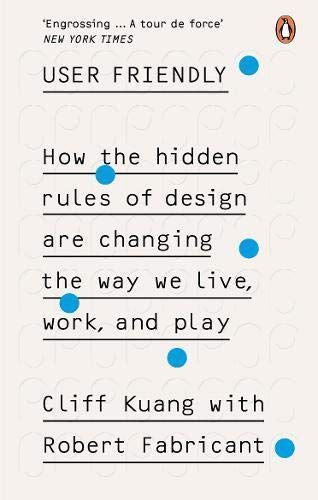
User Friendly How the Hidden Rules of Design are Changing the Way We Live, Work & Play
AMAZON BEST BOOKS OF 2019 PICK FORTUNE WRITERS AND EDITORS' RECOMMENDED BOOKS OF 2019 PICK 'A tour de force, an engrossing fusion of scholarly research, professional experience and revelations from intrepid firsthand reporting' -- New York Times USER FRIENDLY is a must-read for anyone who loves well-designed products-and for the innovators aspiring to make them. It seems like magic when some new gadget seems to know what we want before we know ourselves. But why does some design feel intrinsically good, and why do some designs last forever, while others disappear? User Friendly guides readers through the hidden rules governing how design shapes our behaviour, told through fascinating stories such as what the nuclear accident at Three Mile Island reveals about the logic of the smartphone; how the pressures of the Great Depression and World War II created our faith in social progress through better product design; and how a failed vision for Disney World yielded a new paradigm for designed experience.
Reviews
PG Gonni@sekei
Karolina@fox
Ali Angco@aliangco
Suat Karakusoglu@suat
Fatih Arslan@fatiharslan
Dave Perkins@tallyhoooooo
Raf@raffaele
Lisa Charlotte Rost@lisa
Richard Bruskowski@richy
Bhanu Pratap@bhanupratap
Jesse Bennett-Chamberlain@jessebc
Joylyn yang@joylyn
Ericson Luciano@ericsonluciano
Miriam Isaac@miriamisaac
Aris Acoba@aris_acoba
Irem topcuoglu@irem
Udit Desai@uydesai
Sara Stevanovič@sarastevanovic
Mark@exort
Michael Ernst@beingernst
Jake Dragash@jakedragash
Taya Reznichenko@phillimore
Erik Wallace@erikwallace
Brad Lauster@bradlau
Highlights
Karolina@fox
Page 311
Karolina@fox
Page 269
Karolina@fox
Page 262
Karolina@fox
Page 257
Karolina@fox
Page 228
Karolina@fox
Page 227
Karolina@fox
Page 196
Karolina@fox
Page 163
Karolina@fox
Page 122
Karolina@fox
Page 96
Karolina@fox
Page 68
Karolina@fox
Page 42
Stan Govorukhin@govorukhin